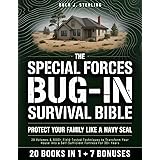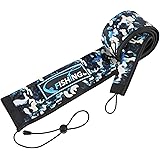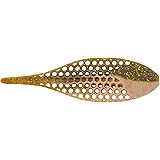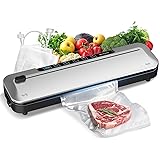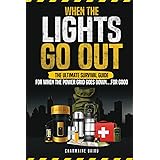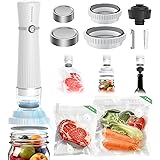Mastering Improvised Wilderness Survival Tips for the Unexpected
Imagine this scenario: One minute, you are enjoying a peaceful hike through the wilderness. The next, a sudden turn of events leaves you disoriented, perhaps separated from your gear, and facing the raw challenges of nature. This is when knowing fundamental **wilderness survival tips** becomes not just useful, but absolutely crucial. The video above provides a fantastic visual guide to resourceful improvisation. It highlights how everyday items can be transformed into life-saving tools. This detailed guide expands on these concepts, ensuring you are equipped with the knowledge to thrive, even when seemingly unprepared. True survival often relies on ingenuity.
Your ability to adapt is paramount in any emergency. Many situations require quick thinking. This post focuses on making the most of what you have. Resourcefulness is key to overcoming obstacles. These practical **survival tips** could make all the difference.
1. Crafting Makeshift Fishing and Hunting Tools
Food procurement is a primary concern. Sustenance must be secured in a survival situation. Ingenious methods can be employed for fishing and hunting.
Improvised Fish Hooks: Zippers and Can Tabs
A zipper pull offers an unexpected resource. Its metal can be shaped into a small, effective fish hook. The zip is first broken off. The loop is then carefully busted open. A loose end is pulled out to a 90-degree angle. This angled piece is then ground down. A rough stone helps create a sharp point. This results in a very usable fish hook. Imagine catching small fish with this simple tool.
Alternatively, soda can ring tabs are also quite useful. These tabs are often discarded. They possess a sturdy metal composition. With some effort, these can be bent and sharpened. They form another type of improvised hook. Always consider the potential of trash.
Arrowheads from Bullet Casings and Circuit Boards
Hunting requires sharp projectiles. Spent bullet casings can be repurposed. A large rock is used to pound the casing flat. The uncrushable rim must be removed. This is achieved by bending the metal repeatedly. It eventually breaks off. A coarse stone then grinds and sculpts the metal. This process forms a strong, sharp arrowhead. Precision and patience are needed here.
One might even delve into old electronics. Cellular phone circuit boards offer another option. These boards are relatively soft. They can be snapped or ground down against a rock. This forms desired arrowhead shapes. This highlights the unexpected utility of modern waste.
2. Ingenious Fire Starting and Management Techniques
Fire provides warmth, cooks food, and purifies water. It also offers psychological comfort. Knowing multiple ways to start a fire is a critical **wilderness survival** skill. Even without a lighter or matches, fire can be created.
Drying Wet Boots with Hot Rocks
Wet boots are uncomfortable and dangerous. Drying them quickly prevents foot problems. Placing boots by a campfire is common. However, a better method exists. Gather several large, dry, non-porous rocks. Place them on the edge of your campfire. Wait until these rocks are very hot. Carefully place them inside your boots. This dries them from the inside. Drying is much quicker and more thorough. The rocks radiate heat internally.
Tinder Sources: Socks and Backpack Foam
Finding good tinder can be challenging. Natural materials are not always dry. Cotton and wool socks are excellent. Loose strands and fibers can be plucked off. This creates a flammable tinder pile. A few sparks will ignite them. This offers a reliable emergency tinder.
Many backpacks contain foam padding. This foam is often flammable. Cut out small pieces of foam for emergency tinder. Vigorously drive sparks into these pieces. Fire will eventually be produced. A word of caution is given here: Do not breathe the fumes. They will be toxic. This method is for dire emergencies only.
Candles, Charcoal, and Ferro Rod Zipper Pulls
A small birthday candle is a great kit addition. If a lighter runs low, transfer the flame. The candle burns for much longer. This provides extended working time. Party trick relighting candles are also windproof. They can carry a flame effectively.
Leftover charcoal is very valuable. A large piece can be carried. With a spark thrower, it reignites easily. This produces a glowing ember. It ensures a fire source for future needs.
Small ferrocerium rods can be drilled. These fit onto jacket zipper pulls. This means a fire-making device is always present. It is an incognito, always-available tool.
Solar Fire from Plastic Bottles
Some plastic water bottles have convex curves. These can focus sunlight. Angle the bottle correctly in front of the sun. The rays are focused like a magnifying glass. This provides a “Hail Mary” fire-making method. It requires bright sun and some practice.
Portable Soda Can Stove
A discarded soda can creates a windproof stove. It can cook food. It provides a small warm fire near a shelter entrance. This is ideal during heavy rain. Cut into the can side from the top down. Slice across the top and bottom. This creates a capital ‘I’-shaped cut. These sections are then peeled open. Tinders and kindling are placed inside. It lights up for a portable cooking stove.
3. Water Purification: The Plastic Bottle Method
Dehydration is a serious threat. Clean drinking water is essential for survival. A plastic bottle can be an invaluable tool for this. Even filthy water can be made safer.
Boiling Water in a Plastic Bottle
A plastic bottle can boil water over a fire. This seems counter-intuitive. The plastic withstands intense heat. This happens as long as water is inside. The water keeps the bottle firm. A small, controlled fire is crucial. The water begins to boil. The result is drinkable water. This method provides critical hydration.
However, a crucial warning is issued. This method releases toxic, carcinogenic plastic chemicals. It should be used as a last resort. Drinking this water is not good for long-term health. Yet, it will keep you alive temporarily.
Filtering Water with a Plastic Bottle
Plastic bottles can also filter water. Cut the bottle in half. The bottom serves as a boiling cup. The top half becomes a water filter. Pierce a few holes into the lid. Gather moss, grass, and small stones. Place these into the top half. Pour filthy water through this makeshift filter. The water comes out much cleaner. It is not perfect, but it is certainly improved. This combined method maximizes safety.
4. Navigation and Signaling with Tech Waste
Modern electronics often fail in the wilderness. However, their components can offer new utility. They become tools for navigation and rescue.
Signal Mirror from a Cell Phone Screen
A dead cell phone is not entirely useless. It can be taken apart. Remove the screen and backscreen elements. A pristine mirror is often found beneath layers. This can be used as a signal mirror. Reflect sunlight signals into aircraft cockpits. This attracts attention from planes or helicopters. It is a powerful rescue tool.
Compass from a Phone Magnet
Dive deeper into the phone. A magnet is located behind speaker elements. This magnet is vital for an improvised compass. You need a small metal strip. Iron or stainless steel works best. A needle, hairpin, or watch strap pin are examples. Rub the magnet down the metal pin for several minutes. The pin becomes magnetized. It will have both attracting and repelling poles. Imagine guiding yourself out of a dense forest. A leaf and still puddle are also needed. Place the leaf on the puddle. Delicately place the magnetized pin onto the leaf. It will rotate and align. This shows the Earth’s north and south magnetic poles. Generally, the pin end furthest from the sun points north in the Northern Hemisphere. This direction reverses for the Southern Hemisphere. This is exactly how ordinary compasses function.
5. Staying Healthy and Secure: Miscellaneous Tips
Beyond fire and water, other factors matter. These include hygiene, insect protection, and basic tool needs.
Pine Needle Insect Repellent
Mosquitoes and other insects are annoying. They can also carry diseases. The scent of pine repels them. Grab a bunch of pine needles. Crush them up in your hands. Rub the released oils onto your clothes. This should keep mosquitoes away. Burning pine needles over a fire also helps. This creates an ambient insect repellent for your entire camp. Consider a perimeter of smoke for protection.
Hygiene with Makeshift Chopsticks
Hands get very dirty in the wild. Eating with them risks illness. Avoid potential sickness. Use makeshift chopsticks. Split a stick down the middle. Place a twig or stone between the cut. Now food can be eaten without hand contact. The tips can be dunked in boiling water. This sterilizes them completely. It reduces bacterial risks. This simple tool maintains hygiene.
Flint Rock Cutting Tools
A sharp cutting tool is always needed. No knife? Look for flint rocks. These are typically beige. They have a shiny black interior. Crack them open. Smash them together. Small, razor-sharp flakes chip off. These fragments make excellent cutting edges. This provides an essential utility for many tasks.
Paracord Bootlaces for Emergency Cordage
Replace ordinary bootlaces with seven-strand 550 paracord. This offers immense versatility. If emergency cordage is needed, pull out inner strands. These are incredibly strong. The whole bootlace can also be used. It provides strong string for bow drill friction fires. Imagine needing to lash a shelter frame together. This cordage is a lifesaver.
Headphone Wire Snares
Headphones carried with your phone have wires. These wires can be used as snares. They target small game. They may not be highly effective. But, they are worth trying in a desperate situation. Any potential food source is valuable.
These **wilderness survival tips** emphasize resourcefulness. They highlight that everyday items hold hidden potential. Be prepared to improvise. Always assess your surroundings for materials. The ingenuity demonstrated here can make a significant difference. It shifts the odds in your favor in a challenging situation. Staying calm and applying these principles is key to survival.


